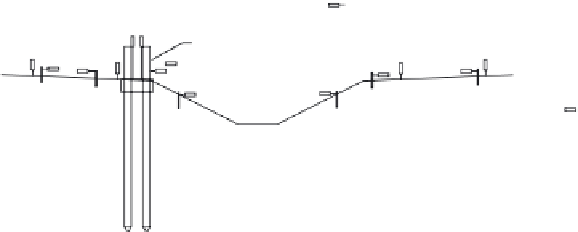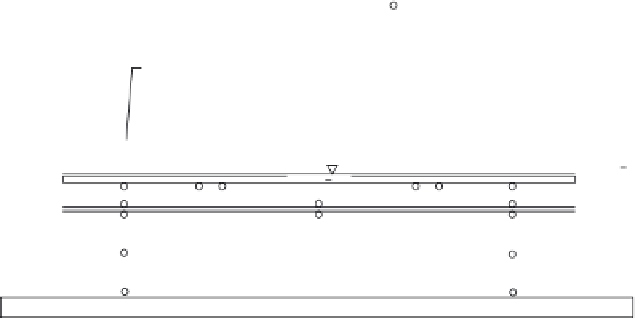Geoscience Reference
In-Depth Information
The beneficial effect of this coupling diminishes as the mass of the spreading embank-
ment soilincreases relative tothe available pinning forces.
Theeffectofpinningisillustratedbytheresultsofadynamiccentrifugemodeltestcom-
prised of two identical 8.5-m-tall (prototype) embankments facing each other across an
open channel, as shown by the cross-section in Figure 12.14 and the photograph of the
dissected model in Figure 12.15. The embankments were made of coarse dry sand, and
were underlain by a layer of loose sand, which was in turn underlain by dense sand. The
water table was just above the top of the loose sand. One embankment had a group of
eight 1.1-m-diameter piles at the crest (two rows of four piles), while the other embank-
ment had no piles. Earthquake shaking with a peak base acceleration of 0.7g caused the
0
0
200 mm - Model
12 m - Prototype
Course Sand Embankment
Pore Pressure Transducer
Accelerometer
Displacement Transducer
Loose Sand
Dense Sand
Fig. 12.14. Cross-sectionof centrifuge model withtwo opposing embankments that are
about 8.5-mtall inprototype; one witha pilegroup and one without
Fig. 12.15. Photograph of thecentrifuge model during dissection; note that the pile cap
displaced 0.75m (prototype) toward the channel while theopposing embankment crest
displaced 1.7m(prototype) toward thechannel













































